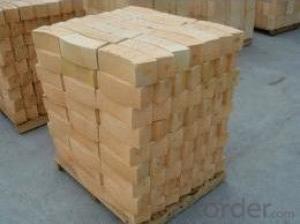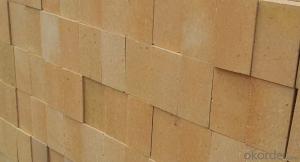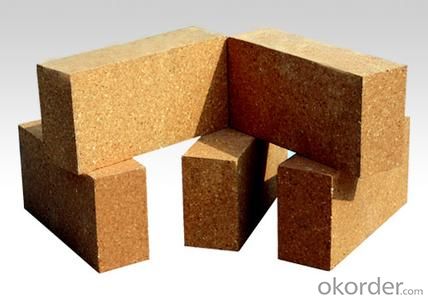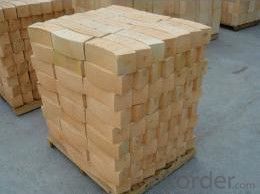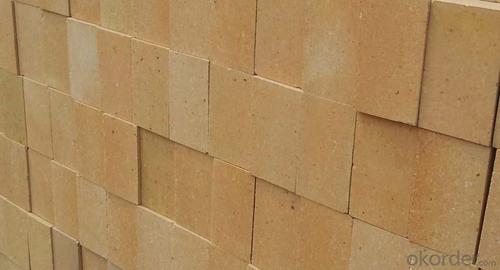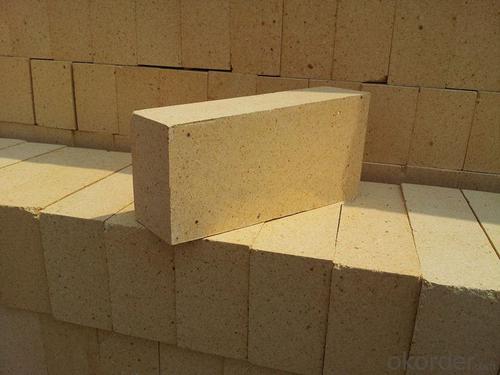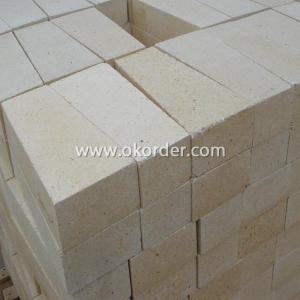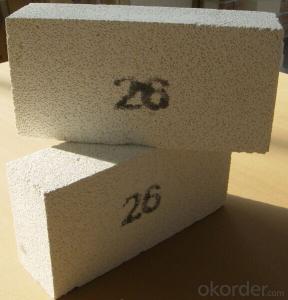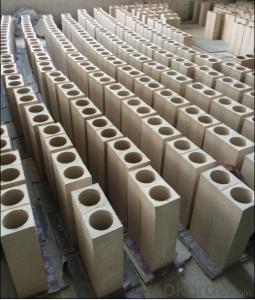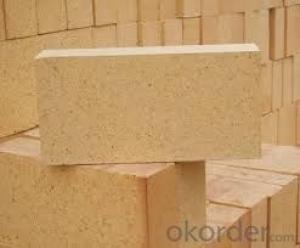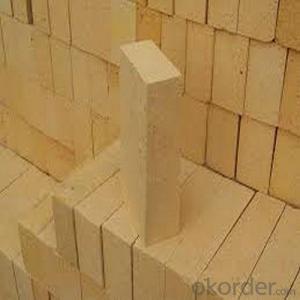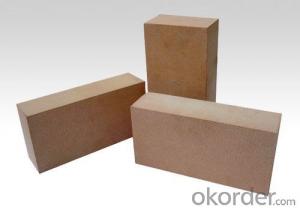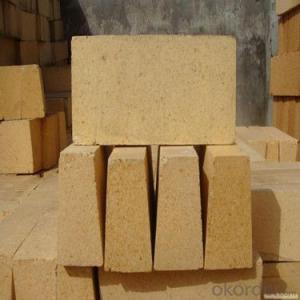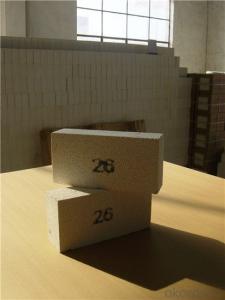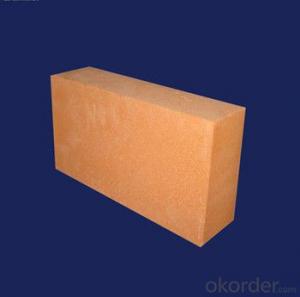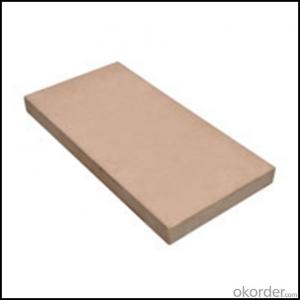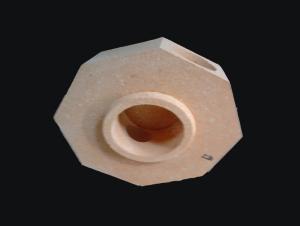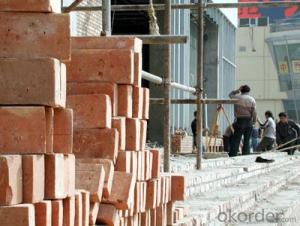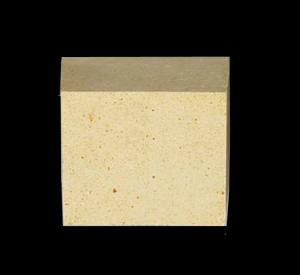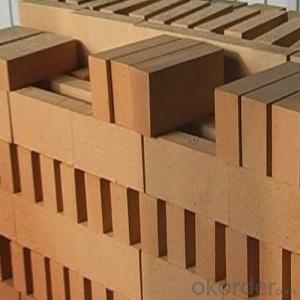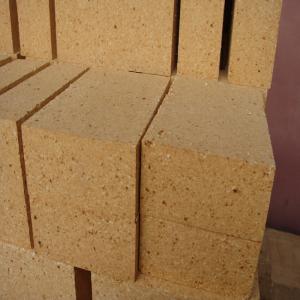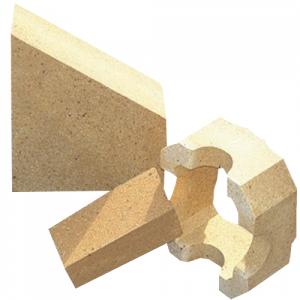Fireclay Brick with High Alumina Content Alumina for Laying Refractory Bricks
- Loading Port:
- China main port
- Payment Terms:
- TT OR LC
- Min Order Qty:
- 1 m.t.
- Supply Capability:
- 1000 m.t./month
OKorder Service Pledge
OKorder Financial Service
You Might Also Like
Description:
Refractory brick is a block of refractory ceramic material used in lining furnaces, kilns, fireboxes, and fireplaces.
We provide high quality Refractory Fire Bricks that are used on wide range in the various industries like Cement, Glass and Steel. Refractory Fire Bricks are provided as per the quantity and specifications required by the customers. We provide an extensive range of Refractory Fire Bricks at reasonable prices that depend upon the quantity ordered.
Fire Clay Brick Features:
1. Good thermal stability, low thermal conductivity, good insulation performance.
2. Low bulk density, good integrity, high mechanical strength.
3. Good thermal shock stability, good resistance to abrasion and corrosion.
4. Good volume stability at high temperature.
5. Low water absorption rate, low creeping rate.
6. Natural clay products, could be shaped freely, non-radioactive and environmentally friendly.
7. Two casted method: down draft kiln and tunnel kiln. General sintering temperature: 1280-1350 degrees.
Fire Clay Brick Application:
1. Widely used in various kilns due to its cheapness and general tray package
2. All parts of furnace lining for middle and small capacity blast furnace.
3. Low temperature parts of waste incinerators and glass melting furnaces, etc.
4. Widely used in metallurgy, construction (glass and cement), chemical industry, electric power and machine building.
Specifications
1. Fire Caly brick Manufacturer
2. ISO 9001 certificate
3. Credible Quality
4. Reasonable price
5. Delivery in time
Technical data:
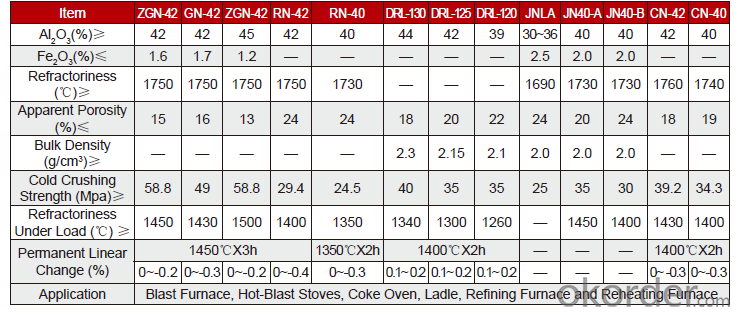
Q1 What’s the transport method?
A1 FCL delivery goods with wooden pallet or wooden case by sea; If LCL delivery, must with wooden case; Sometimes need open top, flat rack or bulk cargo.
Q2 What’s the required payment term?
A2 Generally 30% TT as the prepayment, 70% TT before delivery. If need, 100% Irrevocable Letter of Credit or negotiation.
Q3 Which country are our products exported to?
A3 Apart from entire Chinese market, the US, Russia, Japan, Korea, Australia and some Southeast Asian Nations.
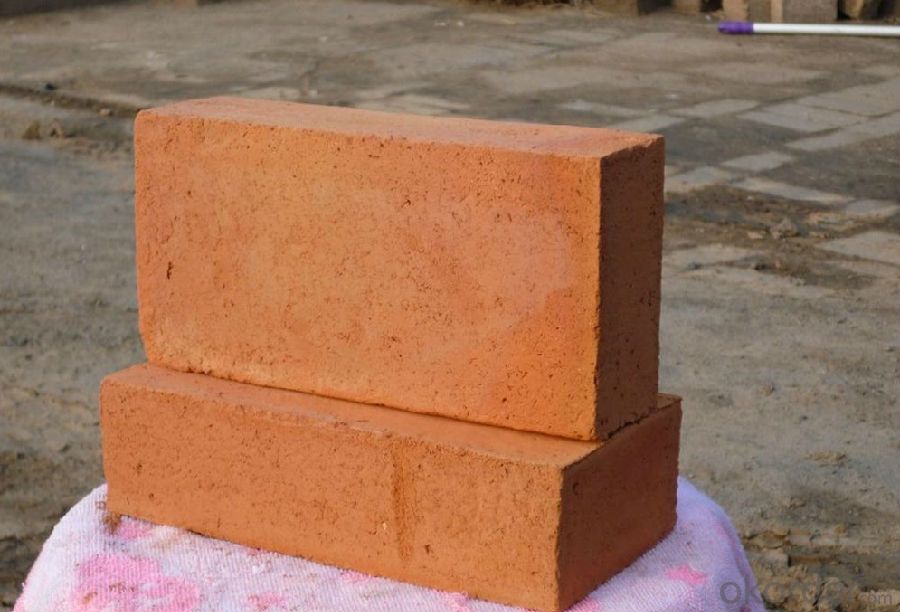
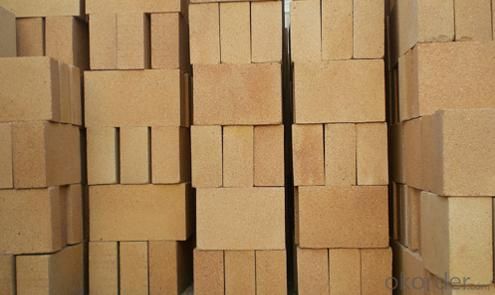
- Q: Small size black brick can replace refractory bricks for wood burning fireplace?
- No, black brick has no thermal insulation effect.
- Q: Is the diameter of 2.5 meters of the calcium aluminate powder rotary kiln referred to the inner diameter of the refractory brick?
- No, it should be outer diameter.
- Q: Lining of refractory bricks in rotary furnace
- The lining now is built with MgO-C brick, the specific time to change it mainly to see the quality and usage of MgO-C brick. A few years ago, the mills are desperately seeking furnace age, some can use thirty thousand furnace, by the way, furnace age of converter refers to the number of steelmaking furnace not time. So now most mills are not simply pursuit furnace age, but economic furnace age, currently furnace age of steel mills around us is mostly in about ten thousand to twenty thousand. In general, the furnace service of the converter is arranged with the overhaul of other equipment. This can realize the synchronous maintenance of various equipment. If the stove is too old but the maintenance is not timely, also is not to replace the lining brick timely, there will be leakage, then the furnace shell and even ring will be damaged, consequences are more serious . The reason is very simple for brick falling off. One is the poor quality of furnace brick,causing brick lining loose, rocking furnace will lead lining brick falling. the other one is the furnace lining brick is pressed too tight in the use procedure and the brick is too thin.
- Q: How to test the various components of the refractory brick?
- It is difficult to distinguish if it is mixed together, fully smashing and mixing. Then assay. Or testing after smashing and separating.
- Q: Can refractory bricks be used when it cracks for 1cm
- 3, If the crack is caused by burning or drying, then it can't be used. While if the carck is caused by refractory brick molding, it still can be used. 4, the crack is caused by refractory bricks raw materials.
- Q: Is the quality of refractory brick influenced if it is soaked by water
- No refractory brick is not afraid of water
- Q: Is there any special requirements for the building blocks of the smoke and gas wells, how about the refractory bricks?
- There are no special requirements. Not necessarily need refractory bricks, red bricks are ok. The building size of the flue is according to the smoke exhaust rate.
- Q: The renewal of refractory brick internal the lime kiln belongs to overhaul. In the absence of production, are the replacement of valve and sporadic projects also considered overhauls? Or routine maintenance!
- The replacement of refractory brick for lime kiln is definitely a major overhaul, and the replacement of the valve and sporadic items can only be regarded as routine maintenance.
- Q: How to count the number of loading refractory bricks?
- Use one meter by one meter wooden raft-towing: use one meter raft-towing to count: Known your brick is T-3 standard bricks, each four layers lies down 15 and sidewards is 4 =64; according to 3.4kg, 47 clay bricks can hold 10 to 12 layers. According to the upper limit, each raft-towing can hold 2.3 tons
- Q: does the electric kiln burner need to be sealed?
- seal when open the kiln, and observe the temperature, when the temperature reaches a point, you can move the firebrick away, and continue observing the temperature to decide whether to seal it or not, but do not seal it completely, repeat the procudure until reach the sinter point or skill requirement.
Send your message to us
Fireclay Brick with High Alumina Content Alumina for Laying Refractory Bricks
- Loading Port:
- China main port
- Payment Terms:
- TT OR LC
- Min Order Qty:
- 1 m.t.
- Supply Capability:
- 1000 m.t./month
OKorder Service Pledge
OKorder Financial Service
Similar products
Hot products
Hot Searches
Related keywords

